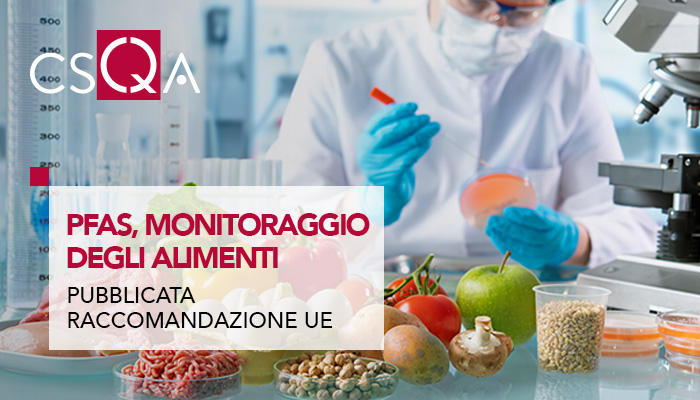
The Commission Recommendation (EU) 2022/1431 of 24 August 2022 concerning the monitoring of perfluoroalkyl substances (PFAS) in food was recently published in the Official Journal of the European Union .
Given the growing concern about the presence of halogenated persistent contaminants in food other than polychlorinated biphenyls and dioxins, the European Commission considers it useful to include halogenated persistent organic pollutants (POPs) of priority interest (such as PFAS) in European monitoring programs in feed and food.
The recommendation therefore invites Member States, in collaboration with food business operators, to monitor the presence of PFAS in food during the four-year period 2022-2025.
Specifically, the following PFAS should be detected:
- perfluorooctanesulfonic acid (PFOS);
- perfluorooctanoic acid (PFOA);
- perfluorononanoic acid (PFNA);
- perfluorohexanesulfonic acid (PFHxS).
Monitoring should cover a broad range of food products reflecting consumption patterns, including fruits, vegetables, starchy roots and tubers, seaweed, cereals, nuts, oilseeds, foods intended for infants and young children, foods of animal origin, soft drinks, wine and beer.
Since there are currently no specific limits for these substances in food at European level, the recommendation contains guide levels for some product categories, which, if exceeded, should lead to further investigations to identify the causes of contamination.
The sampling procedures to be used are those reported in the recently published Commission Implementing Regulation (EU) 2022/1428 which establishes methods of sampling and analysis for the control of perfluoroalkyl substances in certain food products.
Perfluoroalkyl substances (PFAS) have been, and some of them still are, used extensively in industrial and consumer applications, such as in stain-resistant coatings in fabrics and carpets, oil-resistant coatings in paper and board food contact products, fire-fighting foams, surfactants for mining and oil wells, floor polishes, and insecticide formulations. Their widespread use and persistence in the environment have resulted in extensive environmental contamination.
Contamination of food with these substances is mainly due to bioaccumulation in aquatic and terrestrial food chains and the use of food contact materials containing PFAS. Perfluorooctanesulfonic acid (PFOS) and perfluorooctanoic acid (PFOA) and their salts are the PFASs found in the highest concentrations in foods and humans.
For details and further information of interest, please refer to the consultation of the documents published in the Official Journal of the European Union at the following links:
Recommendation (EU) 2022/1431
Implementing Regulation (EU) 2022/1428
(Source: https://www.ceirsa.org/ )